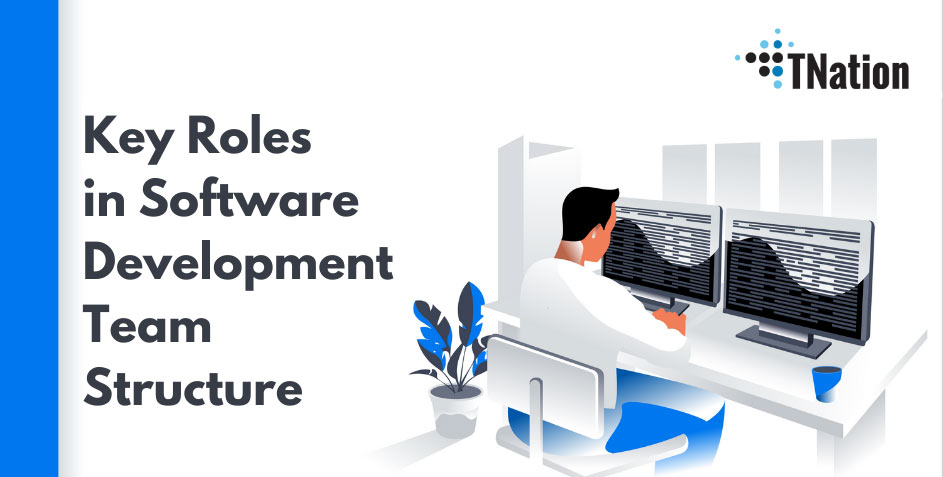When people mention software development, the first thing that comes to mind is a software developer. It is a natural assumption, but the successful team consists of six different and necessary roles. The software development team structure is a diversity of knowledge that ensures the development of winning software products.
Who are Software Development Team Members?
Software development team structure members are like pillars of the house, for example. If someone removes but one, the entire project will eventually falter on its unsteady legs. Some of the roles may complete the project without the other members, but at what cost? The price may be time, quality or functionality. Each of them is far from beneficial for the business.
Suppose a company hires a remote development team to build custom or bespoke software for business needs. That means the team will build software architecture from the ground up. There are also requirements and specifications of the project, and more often than not, a deadline to complete it. Each team member has a specific role and responsibility to provide quality software on time in the software development process.
Roles in Software Development Team
BUSINESS ANALYST
Before the development process starts, a Business Analyst has a responsibility toward the client. Their role in software development is to communicate with clients and the rest of the team. Business Analysts are like bridges between the client and the team. Their goal is to ensure that all parties meet the business’s needs.
PROJECT MANAGER
The Project Manager is the one person taking care of the product lifecycle. Between the Business analyst and the rest of the team, the manager has to look after the project’s scope, requirements, deadlines, monitor the progress and implement the plan. In addition, the Project Manager supervises the work and offers solutions if any impediments arise.
SOFTWARE DEVELOPER
Software developers are the backbone of any project. Without their coding, there would be no software. But, their tasks are more complex than that. There are three different roles among them.
- Front end developer
- Back end developer
- Full-stack developer
The difference is within the structure of the project. Front end developer’s duty lies in the part of the software that users see – the user interface. Their responsibility includes making sure that the software is functional and valuable to the end-user.
On the other hand, the back end developers take care of the software structure in the background. It means that the software architecture consists of developing data layers and business logic. It means that software quality depends on the knowledge and work of the back end developer.
A full-stack developer is like a Jack of all trades. Despite their lack of deep knowledge like their colleagues, they are indispensable in projects that have cost-efficiency requirements. They can offer solutions to any architectural layer of the software, including view, business logic or database.
UI DESIGNER
User Interface (UI) often assimilates with User Experience (UX) design. These two concepts may overlap, but they are different. Hence the roles within them differ. The UI designer role focuses on the user interface and its visual aspect. Thus, the UI designer resolves the user interaction with the software. It is why they are the oracles, guessing which road the user will take.
UX DESIGNER
UX designers have a task to attend to users’ experience while utilizing the software. Although similar to UI, the UX designer focuses not only on usability but also performance, animation, sounds, and the overall look of the software. In other words, a UX designer’s task is to provide the user with the software they will enjoy.
QA SPECIALIST
Quality Assurance (QA) becomes an essential part of software development. It may not be the number one requirement on the list. Still, all product quality and performance depends on the role of QA engineers, testers, and analysts. It is more than bug hunting. QA engineers ensure that software is reliable, secure, take the load, and provide high-quality results.
Are these Roles in Software Development Team Structure Needed?
All these roles are crucial for a project at some point. The quality of the product depends on the roles and their skills. However, businesses often exclude some of them, whether for cutting costs or deem unnecessary. Building software that will stand time and be helpful to end-users relies on the quality of the development team. It is what makes a difference in the market, a great team can build successful software.
In TNation, we have years of experience developing software for different industries. We build software development team structure according to clients’ needs. We can offer you high-level IT professionals to complete your next project.




